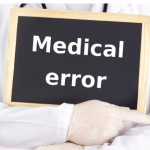CHICAGO (Reuters)—Most Americans will fall victim to at least one diagnostic error in their lifetime, and when this occurs, it often can be deadly, according to a new report released on Tuesday by the Institute of Medicine, which advises the U.S. government and policymakers.
The report called for greater emphasis on improving diagnoses in the United States and reducing the number of errors, which they defined as either an inaccurate or delayed diagnosis.
“Diagnostic errors are a significant contributor to patient harm that has received far too little attention until now,” said National Academy of Medicine President Victor Dzau.
According to the report, diagnostic errors cause about 10% of patient deaths. Studies of patient medical records also suggest that 6% to 17% of adverse events, or harms that occur to patients during a hospital stay, resulted from diagnostic errors.
Many diagnostic errors occur when doctors do not communicate with colleagues, patients and family members. And in the current hospital culture, many doctors are not aware of the errors they make, said the institute, one of the National Academies of Sciences.
Collecting such data is challenging because many healthcare settings discourage the disclosure of diagnostic errors, the report said.
To address such problems, the committee called for greater communication between doctors, patients and their caregivers. It also recommended more training for healthcare professionals and increased spending on research to improve the accuracy of diagnoses.



